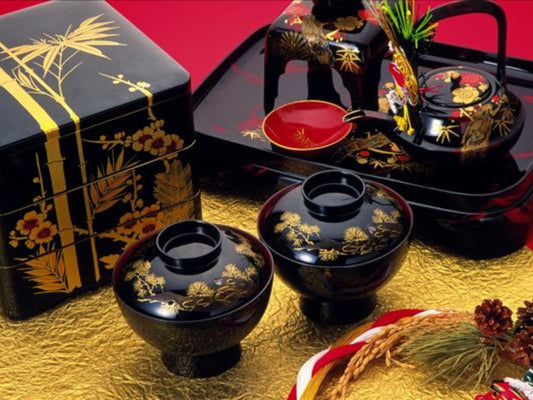Shotengai Magazine

Wagakki (II) :Japanese Traditional Instruments
Wagakki, Japanese traditional instruments, are an integral part of the country's culture. Each of these instruments has its own unique sound and style, and together they create a unique and...
Wagakki (II) :Japanese Traditional Instruments
Wagakki, Japanese traditional instruments, are an integral part of the country's culture. Each of these instruments has its own unique sound and style, and together they create a unique and...

Shikki: The Delicate Japanese Lacquerware
Shikki (lacquerware) is a Japanese craft of painting paper, basketry, leather, and wooden items with “urushi.” It is one of Japan's most iconic traditional handicrafts. For centuries, it has been used...
Shikki: The Delicate Japanese Lacquerware
Shikki (lacquerware) is a Japanese craft of painting paper, basketry, leather, and wooden items with “urushi.” It is one of Japan's most iconic traditional handicrafts. For centuries, it has been used...

Japanese Arts (VI): Ukiyo-e
The Great Wave off Kanagawa is a painting that is famous among Japanese art. It is a ukiyo-e created by Katsushika Hokusai. Ukiyo-e is a Japanese art form that originated in...
Japanese Arts (VI): Ukiyo-e
The Great Wave off Kanagawa is a painting that is famous among Japanese art. It is a ukiyo-e created by Katsushika Hokusai. Ukiyo-e is a Japanese art form that originated in...

Japanese Arts (V): Kyogen
Kyogen is one of the classical forms of theater in Japan. It is comic relief between two Noh plays (more serious in nature) in the same program. Kyogen plays are...
Japanese Arts (V): Kyogen
Kyogen is one of the classical forms of theater in Japan. It is comic relief between two Noh plays (more serious in nature) in the same program. Kyogen plays are...

Japanese Arts (IV): Noh
Noh is the one of oldest performing arts in the world. It is a Japanese theatrical performance that combines dance, drama, music, and poetry. It has been inscribed on the...
Japanese Arts (IV): Noh
Noh is the one of oldest performing arts in the world. It is a Japanese theatrical performance that combines dance, drama, music, and poetry. It has been inscribed on the...

Kodo: Japanese Art of Incense
Kodo is one of the three classical Japanese arts of refinement. It is an art of Japanese incense. The essence of Kodo is experiencing Zen rather than smelling the fragrance. Kodo...
Kodo: Japanese Art of Incense
Kodo is one of the three classical Japanese arts of refinement. It is an art of Japanese incense. The essence of Kodo is experiencing Zen rather than smelling the fragrance. Kodo...
